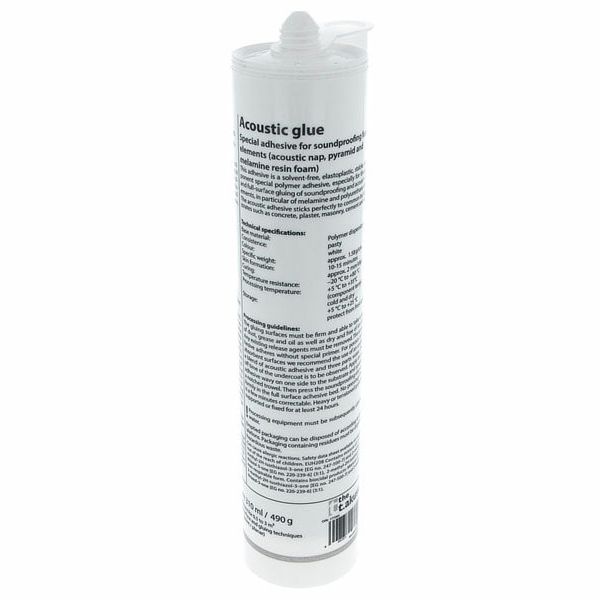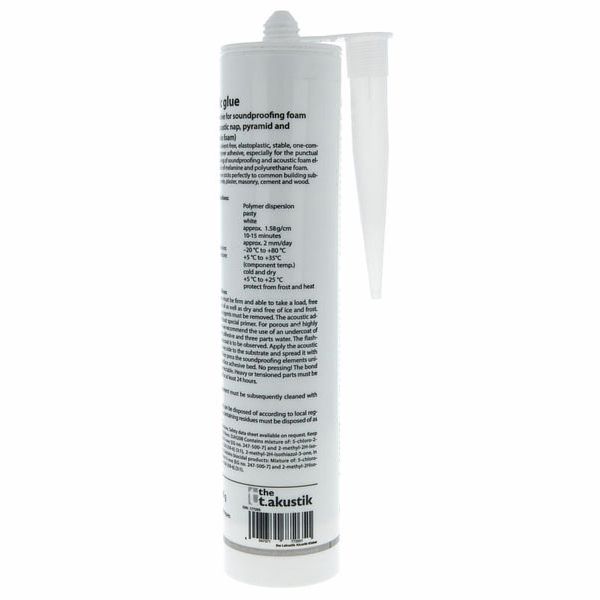Before I applied the glue, I had read pretty much all reviews here and realized that there's a bit of confusion as to how the glue should be applied and used. I put the best together, applied some common sense and ... it worked :)
This was the first time I attached acoustic panels onto a wall using a glue, and a second time in my life I used the sealant gun. 5 days after the application, the panels are still in place.
So.... If I could do it, you can do it.
What you need:
- Sealant gun to apply the glue.
You can get one in ANY hardware/DIY store. The glue bottle is exactly like the bottles bathroom sealants come in so any sealant gun would work. It can also be called a 'caulking gun'.
- Pencil, measuring device and spirit level (ideally a laser one).
That's all for measuring and making sure that your panels are nicely levelled. You want your studio to look professional, not sloppy.
- A nice wall.
Here's the deal - for any glue to work, it must form the bond with both surfaces. This will not work if your wall is greasy, dirty, painted with water-repellant paint etc. You may want to repaint your studio walls and ceiling with at least two layers of basic, non-glossy paint... and then wait a couple of weeks for the paint to dry out properly. This was exactly what I did after moving in to my new place.
- A helper.
Large acoustic panels will block your view of the markings you made on the wall. A second person will help you move the panel precisely to the desired position.
Important!
Do one tile/panel at a time and keep the window open. The glue does not stink much, but you can certainly sense the smell.
1. Plan ahead - make sure you know where you want to put your acoustic tiles/panels. I used several sheets from a common squared paper notebook.
2. Apply the glue on back side of the panel/tile.
Small tiles: 5 blobs (1 cm circle) of glue - 4 corners (1.5 cm off the edges) and center. You'll do no wrong if you just create a simple square and a blob in the middle.
Large panels: Create a wave pattern around the perimeter of the panel about 2 cm from the edge). Then do the same connecting the opposite corners (think 'confederate flag'). I'd attach a photo but there's no such option here.
3. Carefully lift the panel/tile and take it to the wall - maneuver it to the desired position but still keep it 2-3 centimeters (1 inch in old money) from the wall. Here's where the helper comes in to make sure you hit all the marks you made on the wall.
4. Press the panel/tile against the wall.
5. Apply mild pressure along the areas where you applied the glue. You will feel how the tile/panel is actually sucked onto the wall.
6. Move on to the next panel...
One tube was enough for 7 pieces of EQ Acoustics Classic Wedge 30 tiles and 8 pieces of t.akustik HiLo-N40 panels.







